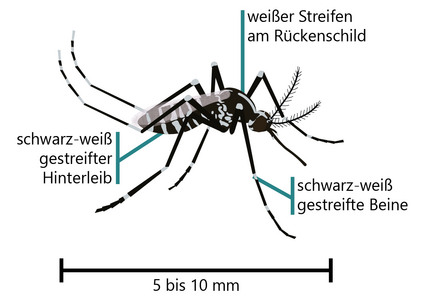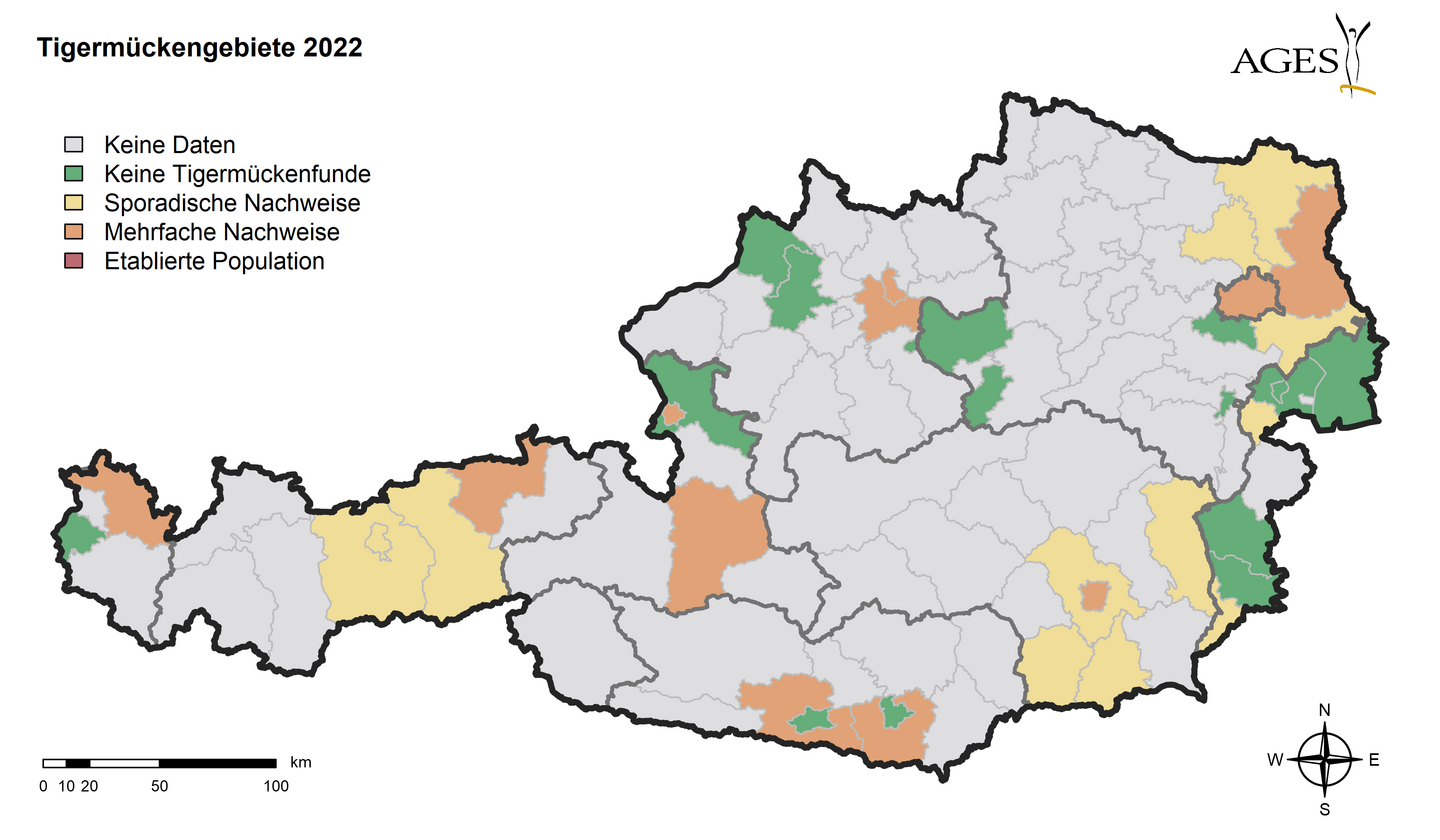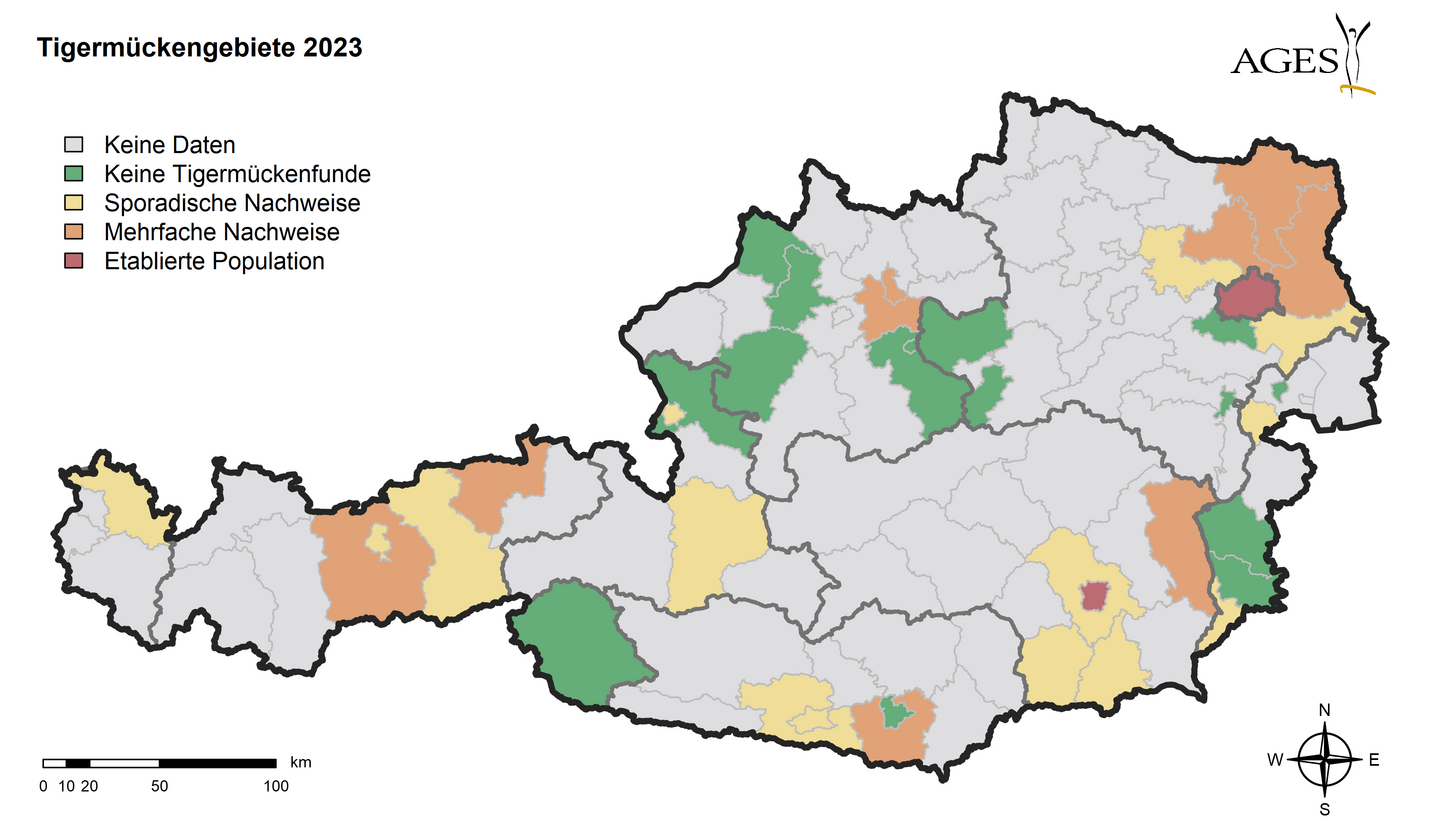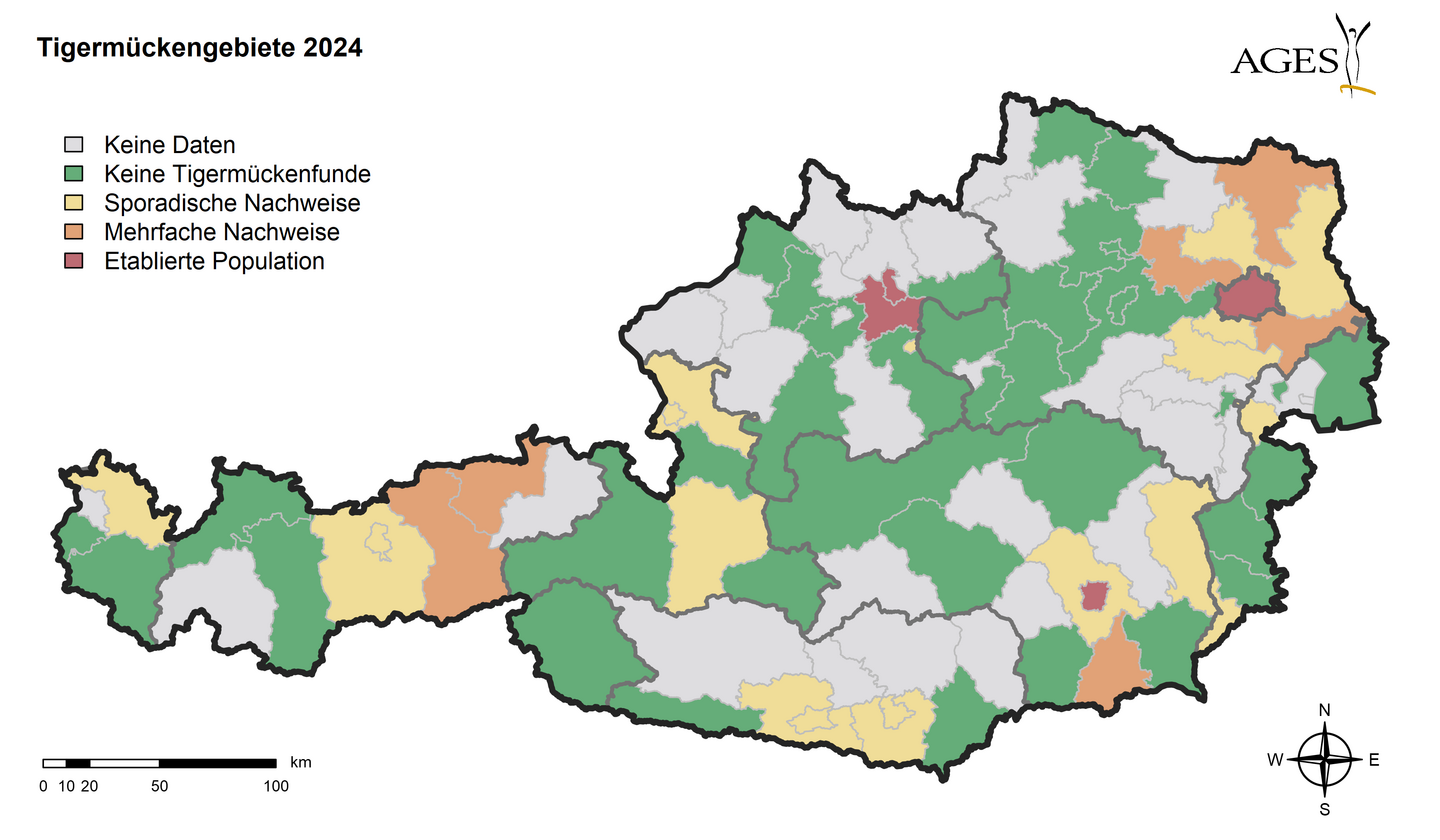The first Asian tiger mosquito was discovered in Austria in 2012. At that time, it was still a single specimen, and in the years that followed, tiger mosquitoes were only occasionally detected. However, the situation has since changed: in 2022, the tiger mosquito was found in all federal states for the first time as part of our mosquito monitoring programme. However, established populations that can survive the winter in our country only exist in parts of Vienna, Graz and Linz.
Asian tiger mosquitoes (Aedes albopictus) are potential vectors of over 20 different pathogens. Many of these, such as dengue, Zika or chikungunya, cannot be transmitted by native mosquito species.
Developmental stages of the Asian tiger mosquito
Tiger mosquitoes are so-called "container breeders" and prefer (very) small water holes to lay their eggs. In their natural environment, these are mainly tree hollows; in urban areas, these can be all kinds of containers in which water collects, such as rain barrels, bird baths, watering cans, gullies, blocked gutters, flower vases, plant saucers, buckets, cans, bottles or jars. Car tyres stored outdoors with accumulated rainwater are also particularly attractive. The female lays around 40-90 black eggs of around 0.5 mm in size per egg-laying cycle, which she distributes to various water points. The eggs are laid on the wall of the container just above the water level. When the eggs are flooded, e.g. during the next rainfall, the larvae hatch. After about 10-15 days (depending on the temperature), the adult tiger mosquitoes develop. The eggs of the tiger mosquito are very robust and can survive for months (e.g. during the winter) before they hatch.
Female tiger mosquitoes live for about 2-4 weeks, males only for about a week. As the tiger mosquito originally comes from tropical/subtropical regions, only the eggs overwinter in this species. But even these are not frost-resistant and die as soon as temperatures drop below freezing for several days. Increasingly mild climatic conditions favour the establishment of tiger mosquito populations in increasingly northern regions.
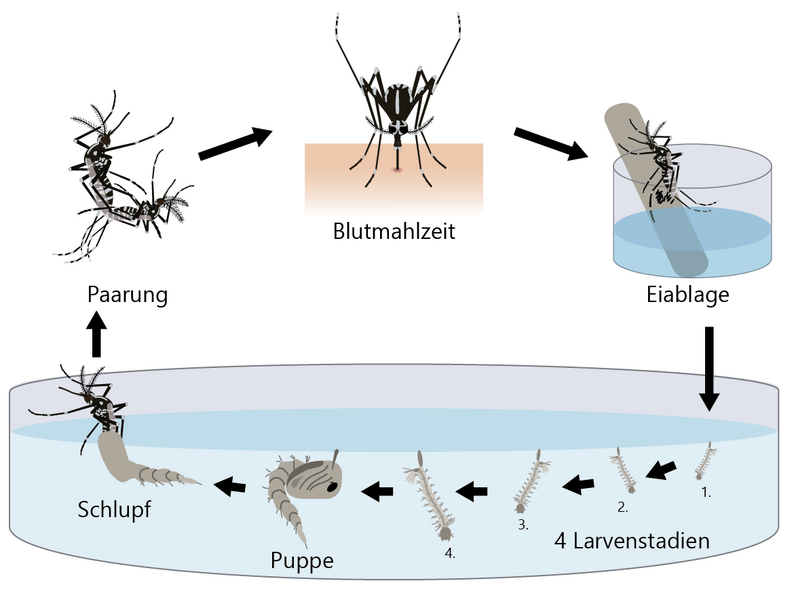
Surveillance is becoming increasingly important
In order to monitor the occurrence and spread of potential invasive mosquito species in Austria, we carry out mosquito monitoring throughout Austria in cooperation with the provinces, universities and associations on behalf of the Ministry of Health. The monitoring consists of two parts: expert monitoring with ovitraps and a citizen science project.
For the expert monitoring, ovitraps ("egg clutch traps") are set up at around 60 locations throughout Austria, which are checked weekly from May to October for egg clutches of container-breeding mosquito species (this includes all mosquito species introduced to Austria). These traps are mainly set up in urban areas and in places where alien species can be introduced into the country (e.g. motorway service stations). It is usually much warmer in cities than in the surrounding countryside, which favours the survival of tiger mosquito populations over the winter. The tiger mosquito also finds many suitable breeding waters here (small, often artificial water points such as rain barrels or flower pot coasters) and many potential hosts - especially us humans. For example, since their first findings in Vienna (since 2020) and Graz (2021), in both cases in allotment settlements, tiger mosquitoes have now been able to spread across large parts of these cities.
Expert monitoring provides important data for monitoring the spatial and temporal occurrence of tiger mosquitoes. However, we are not able to cover Austria everywhere. That is why we are combining our expert monitoring with a citizen science approach, as citizens can also provide valuable information on the occurrence of tiger mosquitoes. The free "Mosquito Alert" app provides a tool that can be used to easily report possible tiger mosquitoes. The photos submitted are reviewed by national and international experts and the findings are displayed on a publicly accessible map. This data is particularly important for monitoring the local spread in urban areas.
Last updated: 21.10.2025
automatically translated
